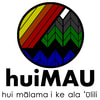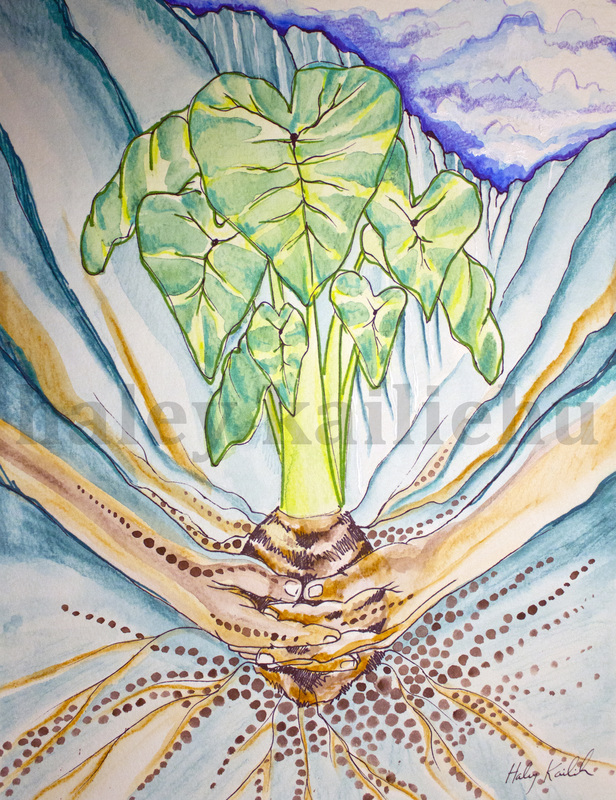ʻAʻole mea ʻoi aku o ka waiwai e like me ke kanaka i noho kūʻokoʻa no ke aloha i kona ʻāina. 11/27/2015
ʻAʻole mea ʻoi aku o ka waiwai |
| E ka lāhui aloha ʻāina, mai Hawaiʻinuikuauli a ka mole ʻolu o Lehua, ke aloha nui iā ʻoukou. Eia nō he kupa o ka ʻāina kaulana i ke ala ʻūlili ke hoʻolono aku nei i ka leo o ke kai o Koholālele e wawā aku nei mai kahi kihi a kahi kihi o ka ʻāina kihi loa, mai ka piko o Wākea a ke kumu pali lele koaʻe. Ua ao, ua mālamalama a lohe ʻia mai ka ʻolēhala o ka leo hala ʻole o nā kai ʻewalu. ʻO kēia leo heahea, ‘o ka lāhui ʻōiwi nō ia, a ua kūpaʻa nō hoʻi i ke aloha no ko kākou ʻāina kulāiwi. Ea mai ko Hawaiʻinuiākea mai ka pō mai, puka mai i ke ao, a i lāhui aloha ʻāina kākou mai ka wā kahiko a hiki i ke au hou e neʻe nei i ko kākou kuamoʻo i hoʻopaʻa ʻia i ko kākou ʻāina. Ua nohopaʻa ua kuamoʻo aloha ʻāina nei i loko o kākou, a ua hoʻohiki paʻa ʻia i nā ʻōlelo koʻikoʻi a kekahi aloha ʻāina ʻoiaʻiʻo o Hawaiʻi, a Joseph Nāwahī, ʻo ia hoʻi “ʻAʻole mea ʻoi aku o ka waiwai e like me ke kanaka i noho kūʻokoʻa no ke aloha i kona ʻāina” (Ke Aloha Aina, July 4, 1896). Paʻa kēia ʻano o ka noho ʻana no ke aloha ʻāina ma ka moʻolelo no ʻUmi-a-Līloa, ke aliʻi kaulana o Hāmākua, ma Hawaiʻi. I ka lilo ʻana o ka ʻāina i ko ʻUmi kuaʻana, iā Hakau, a hoʻokae wale maila ʻo Hakau i kona kaikaina, hoʻi hou akula ʻo Umi mai Waipiʻo aku i ke kuamoʻo i ka ʻāina makuahine, a ua noho kūʻokoʻa ʻo ia no ke aloha i kona ʻāina. Iā ʻUmi nō e noho ʻilihune ana i ia manawa, ua lālau ʻia, pūʻili a paʻa ke aloha i ka ʻāina a lawelawe pono akula kona mau lima i ka mahiʻai a me ka lawaiʻa. Pēlā i paʻa ai ka ʻāina iā ʻUmi a kuapapa nui ke aupuni o Hawaiʻi i nei aliʻi mahiʻai a kapa ʻia he puʻipuʻi a ka lawaiʻa hoʻi. Hoʻokahua ka ʻāina, hānau ke kanaka. Hoʻokahua ke kanaka, hānau ke aliʻi. ʻO ke aloha ʻāina ke kahua, a kūkulu pono ʻia ka hālau aupuni. A pau aʻela ka hale o ke aliʻi paʻa ʻole i ke aloha no kona ʻāina. Wahi a ka poʻe kahiko, ʻaʻohe aliʻi e like me ko ʻUmi noho aupuni ʻana no kona aloha paʻa mau loa i ka ʻāina, a no kona mālama ʻana i ke kanaka nui a me ke kanaka iki. Iā ia nō i kū ai i ka moku o Hawaiʻi, ua hoʻonohopapa ʻo ia i ka poʻe akamai o ka ʻāina i kēlā ʻoihana kēia ʻoihana mai ka poʻe ʻai moku a i ka poʻe ʻai kuakua. Aia nō a nohopapa ka poʻe i ka ʻāina, kuapapa ke aupuni a paʻa ka pono o ka ʻāina no nā pua, nā mamo, a hiki i nā kawowo aloha ʻāina hope loa. He moʻolelo waiwai kēia moʻolelo no ʻUmi, e ka lāhui aloha ʻāina, i mea e ʻike ai kākou a me kā kākou mau pulapula i ka waiwai ʻoiaʻiʻo o ke aloha ʻāina. No laila, e ka lāhui kanaka, e hoʻomau aku kākou i ke kuamoʻo aloha ʻāina ʻoiaʻiʻo, e like me kā ke aliʻi kaulana ʻo ʻUmi-a-līloa. E hoʻi kākou i ka ʻāina makuahine a e noho kūʻokoʻa kākou no ke aloha i ko kākou ʻāina. Pēlā nō kākou e kūkulu hou aku ai i hālau aupuni kūʻokoʻa a pono hoʻi no kākou a no ko kākou ʻāina. ʻAʻohe mea ʻoi aku o ka waiwai Na Noʻeau Peralto Paʻauilo, Hāmākua, Hawaiʻi Nowemaba 28, 2015 | Oh nation of aloha ʻāina, from Hawaiʻinuikuauli to the taproot of Lehua, great aloha to you all. Here is a native of the ʻāina famous for the steep trails listening to the voice of the seas at Koholālele reverberating from one corner to the other corner of the ʻāina of the long corner, from the piko o Wākea to the base of the cliffs where the koaʻe birds fly. The sun has arisen, it is light, and the unmistakable, joyous sound of the voice of the eight seas is heard, and it remains steadfast in aloha for our beloved homelands. Those of Hawaiʻinuiākea rose up in the procreative night and emerged into the light. We are a nation of aloha ʻāina from the time of old until this new era moving forth because of the pathways of tradition that are fastened to our ʻāina, and these traditions are firmly sworn into the substantive words of a true aloha ʻāina of Hawaiʻi, Joseph Nāwahī, “There is nothing of greater value than Kanaka living independence through aloha for their ʻāina.” (Ke Aloha Aina, July 4, 1896) This way of living for aloha ʻāina is exemplified in the moʻolelo of ʻUmi-a-Līloa, the famous chief of Hāmākua, Hawaiʻi. When the lands of Hawaiʻi came under the control of ʻUmi’s older brother, Hakau, and Hakau continuously mistreated his younger brother with contempt, ʻUmi returned from Waipiʻo to the homelands of his mother, and there he lived independently for the aloha of his ʻāina. While ʻUmi lived in destitution during that time, he firmly grasped and held tightly to the aloha he had for the ʻāina, and with his own hands took on the work of farming and fishing. That is how the ʻāina was secured by ʻUmi, and the kingdom became unified by this farmer chief, who was also called a stalwart fisherman. The ʻāina creates the foundation upon which the people are born, and the people create the foundation upon which the chief is born. Aloha ʻāina is the foundation upon which a house of government can be properly built. And the house of the chief who is not firm in aloha for their ʻāina will be easily destroyed. According to the people of old, there was no other chief who could compare to the kingdom established by ʻUmi, because of his eternal steadfastness in aloha for the ʻāina and his care for the “big person” and the “small person.” When he became the ruler of the island of Hawaiʻi, he established in place all of the brilliant, intelligent people of the ʻāina in each and every facet of society, from those who ruled the districts to those who tended to the small, cultivated patches. It is when the people were established generationally in place that the kingdom was secured in unity, and the pono of the ʻāina was solidified for the many descendants and offspring, until the most distant progeny of aloha ʻāina. This moʻolelo for ʻUmi is a very valuable one, oh nation of aloha ʻāina, so that we, and our descendants, may come to know the true value of aloha ʻāina. Therefore, oh native nation, let us continue along the pathway and perpetuate the traditions of true aloha ʻāina, as did the famous chief ʻUmi-a-līloa. Let us return of our motherlands and live independently for the aloha of our ʻāina. That is how we shall again build an independent house of government that is pono for us and for our ʻāina. There is nothing of greater value. By Noʻeau Peralto Paʻauilo, Hāmākua, Hawaiʻi November 28, 2015 |
Eia mai kekahi mau mana o ka moʻolelo no ʻUmi (Here are some other versions of the moʻolelo for ʻUmi):
A eia hoʻi kekahi mau ʻatikala e pili ana i ka Lā Kūʻokoʻa ma Hawaiʻi nei (And here are some articles about Lā Kūʻokoʻa, Independence Day here in Hawaiʻi):
- “Ka Moolelo Hawaii,” Ke Au Okoa, Now. 3, 1870, na Samuel M. Kamakau. An English translation is provided here in Ruling Chiefs of Hawaiʻi.
- “Ka Moolelo no Umi: Kekahi Alii Kaulana o ko Hawaii Nei Paeaina,” na Abramham Fornander.
A eia hoʻi kekahi mau ʻatikala e pili ana i ka Lā Kūʻokoʻa ma Hawaiʻi nei (And here are some articles about Lā Kūʻokoʻa, Independence Day here in Hawaiʻi):
- "A Time to Remember." Ka Hoku o ka Pakipika, Buke I, Helu 10, Aoao 2. Novemaba 28, 1861.
- "The 28th of November." Elele Hawaii, Buke 9, Pepa 19, Aoao 75. Dekemaba 1, 1854.
3 Comments
Archives
November 2015
October 2015
June 2015
July 2014
June 2014
May 2014
January 2014
April 2013


 RSS Feed
RSS Feed